US troops on Friday started releasing more than 300 Iraqi detainees from Abu Ghraib prison, a jail from the era of former Iraqi president Saddam Hussein where abuses of prisoners by US soldiers have damaged the credibility of the US-led coalition governing Iraq.
One bus carrying 17 prisoners left the jail and drove to a US military base in west Baghdad, where tribal leaders awaited them. The prisoners kneeled and prayed beside the bus.
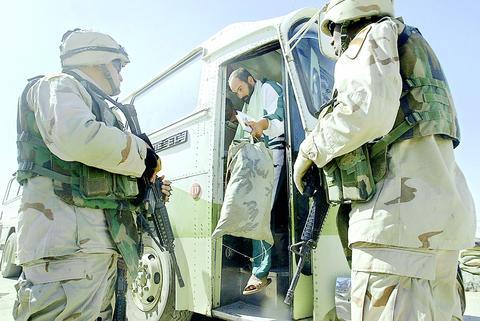
PHOTO: AFP
The coalition periodically releases prisoners from Abu Ghraib on the western outskirts of Baghdad. Some 315 were scheduled for release yesterday, and the next release was planned for May 21.
On Thursday, US Defense Secretary Donald Rumsfeld went to the Abu Ghraib prison camp and insisted the Pentagon did not try to cover up abuses there.
Images of abuse have appeared in photos of Iraqi prisoners that were taken by US military guards at the prison near Baghdad. Courts-martial have been ordered for three military police guards.
Rumsfeld called the controversy surrounding the prison a "body blow for all of us" and said people who did wrong will be punished.
All 3,800 Iraqis at Abu Ghraib are "security detainees," or people suspected of roles in insurgent attacks, said the commander, Major-General Geoffrey Miller.
All prisoners under US control will have been moved out of the old prison building by the end of the month, and a new complex of outdoor camps will be built to provide better living conditions.
Rumsfeld encouraged Miller to thin out the prisoner population as quickly as possible. Miller said 300 to 400 detainees per week are either released outright or transferred to the Iraqi justice system.
Meanwhile, explosions rocked the southern edge of the Iraqi Shiite holy city of Najaf yesterday, hours after fighting broke out between US troops and militiamen in the city's vast cemetery.
The explosions came from an area where US forces and radical Shiite cleric Moqtada Sadr's Mehdi army militia are facing off, south of the sacred Imam Ali mausoleum.
The explosions were heard shortly before yesterday's prayers at Najaf, one of Shiite Islam's holiest cities.
Shooting was also heard from the southern and western entrances to the city, and hospital sources said seven people, including an Afghan pilgrim, had been wounded.
Earlier at least three US tanks were seen in a cemetery northwest of the city centre about 1km from the shrine, and US helicopters hovered over the area.
Armed black-clad men veiled with scarves were seen running inside the sprawling cemetery and fanning out across the area.
Heavy black smoke was seen rising from the cemetery and the sound of heavy guns was heard.
In the area to the south, known as Bahr al-Najaf, some 2,500 US soldiers are camped in the desert.
Sadr's fighters have dug in with heavy weapons on a hill overlooking Bahr, about 100m south of the shrine. Their military command post is also in this area right behind the shrine.
The fighting comes one day after Najaf's new police chief, Ghaleb al-Jazairi, accused militiamen of "terrorizing" residents and asked them to leave.
The newly appointed governor, Adnan al-Zorfi, said Thursday that a "US entry into the center of Najaf may be imminent," saying that many around Sadr were "simple men who did not fathom the military might of the United States.
"Nobody can set conditions on the Americans," he said, urging Sadr to disband his militia "immediately" and promising that the matter of legal proceedings against him in connection with the murder of a rival cleric last year "could be resolved in Baghdad."
Sadr snubbed on Wednesday all mediation efforts and calls to disband his Mehdi Army militia, vowing to lead his men to martyrdom.
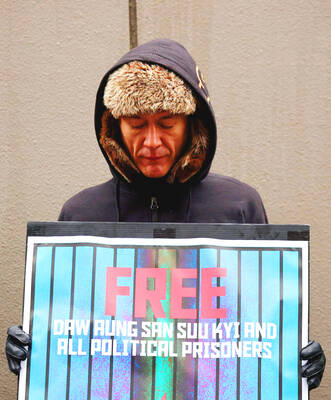
The Burmese junta has said that detained former leader Aung San Suu Kyi is “in good health,” a day after her son said he has received little information about the 80-year-old’s condition and fears she could die without him knowing. In an interview in Tokyo earlier this week, Kim Aris said he had not heard from his mother in years and believes she is being held incommunicado in the capital, Naypyidaw. Aung San Suu Kyi, a Nobel Peace Prize laureate, was detained after a 2021 military coup that ousted her elected civilian government and sparked a civil war. She is serving a
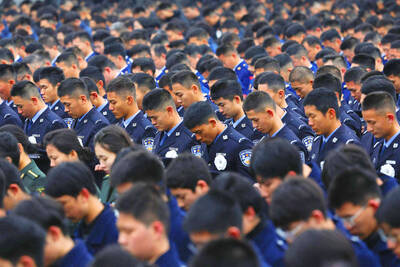
China yesterday held a low-key memorial ceremony for the 1937 Nanjing Massacre, with Chinese President Xi Jinping (習近平) not attending, despite a diplomatic crisis between Beijing and Tokyo over Taiwan. Beijing has raged at Tokyo since Japanese Prime Minister Sanae Takaichi last month said that a hypothetical Chinese attack on Taiwan could trigger a military response from Japan. China and Japan have long sparred over their painful history. China consistently reminds its people of the 1937 Nanjing Massacre, in which it says Japanese troops killed 300,000 people in what was then its capital. A post-World War II Allied tribunal put the death toll
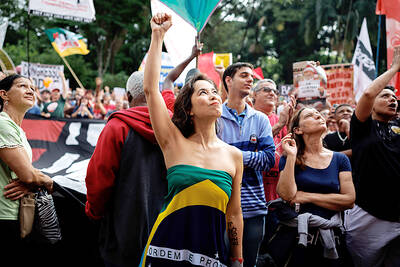
‘NO AMNESTY’: Tens of thousands of people joined the rally against a bill that would slash the former president’s prison term; President Lula has said he would veto the bill Tens of thousands of Brazilians on Sunday demonstrated against a bill that advanced in Congress this week that would reduce the time former president Jair Bolsonaro spends behind bars following his sentence of more than 27 years for attempting a coup. Protests took place in the capital, Brasilia, and in other major cities across the nation, including Sao Paulo, Florianopolis, Salvador and Recife. On Copacabana’s boardwalk in Rio de Janeiro, crowds composed of left-wing voters chanted “No amnesty” and “Out with Hugo Motta,” a reference to the speaker of the lower house, which approved the bill on Wednesday last week. It is
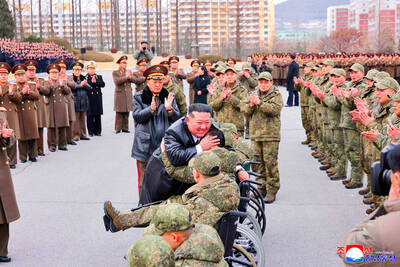
FALLEN: The nine soldiers who were killed while carrying out combat and engineering tasks in Russia were given the title of Hero of the Democratic People’s Republic of Korea North Korean leader Kim Jong-un attended a welcoming ceremony for an army engineering unit that had returned home after carrying out duties in Russia, North Korean state media KCNA reported on Saturday. In a speech carried by KCNA, Kim praised officers and soldiers of the 528th Regiment of Engineers of the Korean People’s Army (KPA) for “heroic” conduct and “mass heroism” in fulfilling orders issued by the ruling Workers’ Party of Korea during a 120-day overseas deployment. Video footage released by North Korea showed uniformed soldiers disembarking from an aircraft, Kim hugging a soldier seated in a wheelchair, and soldiers and officials